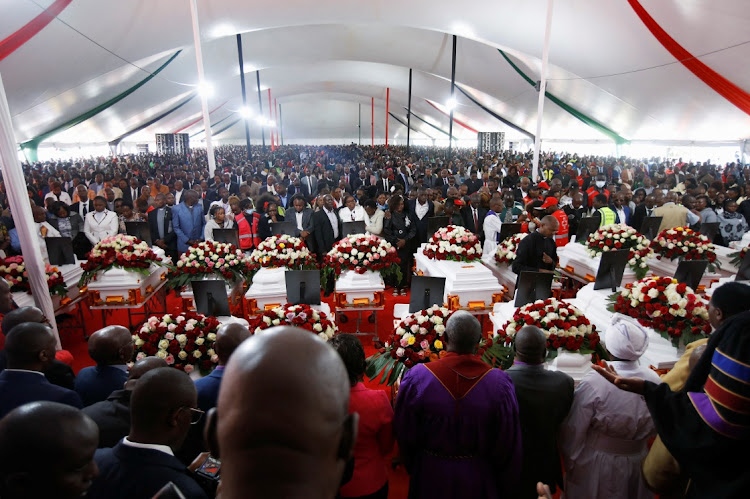Thousands of mourners gathered Thursday for a solemn memorial service honoring 21 children who perished in a devastating fire at Hillside Endarasha Academy, a boarding school in central Kenya’s Nyeri town earlier this month.

The ceremony featured rows of small white coffins, each adorned with flowers and photographs of the young victims, most aged between 9 and 13. The children had been trapped in their dormitory during the blaze.
Opposition party leader Eugene Wamalwa, addressing the crowd, emphasized the national impact of the tragedy: “To come to Nyeri and see all these coffins, this is one of the greatest national tragedies that we’ve had in our country.”

This incident has reignited concerns about school safety in Kenya, which has a troubling history of such fires. A 2018 parliamentary report documented over 60 cases of arson in public secondary schools that year alone.
While the cause of the Hillside Endarasha Academy fire remains under investigation, researchers note that many similar incidents have been linked to student protests against harsh disciplinary measures and poor living conditions.
The tragedy has evoked painful memories for families affected by previous school fires. Maryanne Mwangi, whose 14-year-old daughter Virlear died in a 2017 Nairobi school fire, expressed frustration at the government’s apparent lack of progress in improving school safety despite the creation of various task forces.

Mwangi criticized the strict disciplinary environment in many Kenyan boarding schools, likening them to “military camps” and suggesting that such conditions may contribute to student unrest and potential arson attempts.
As Kenya grapples with this latest tragedy, questions persist about the effectiveness of current safety measures and disciplinary practices in the country’s schools. The mass funeral serves not only as a moment of collective grief but also as a stark reminder of the urgent need for comprehensive reforms to ensure the safety and well-being of students across the nation.



